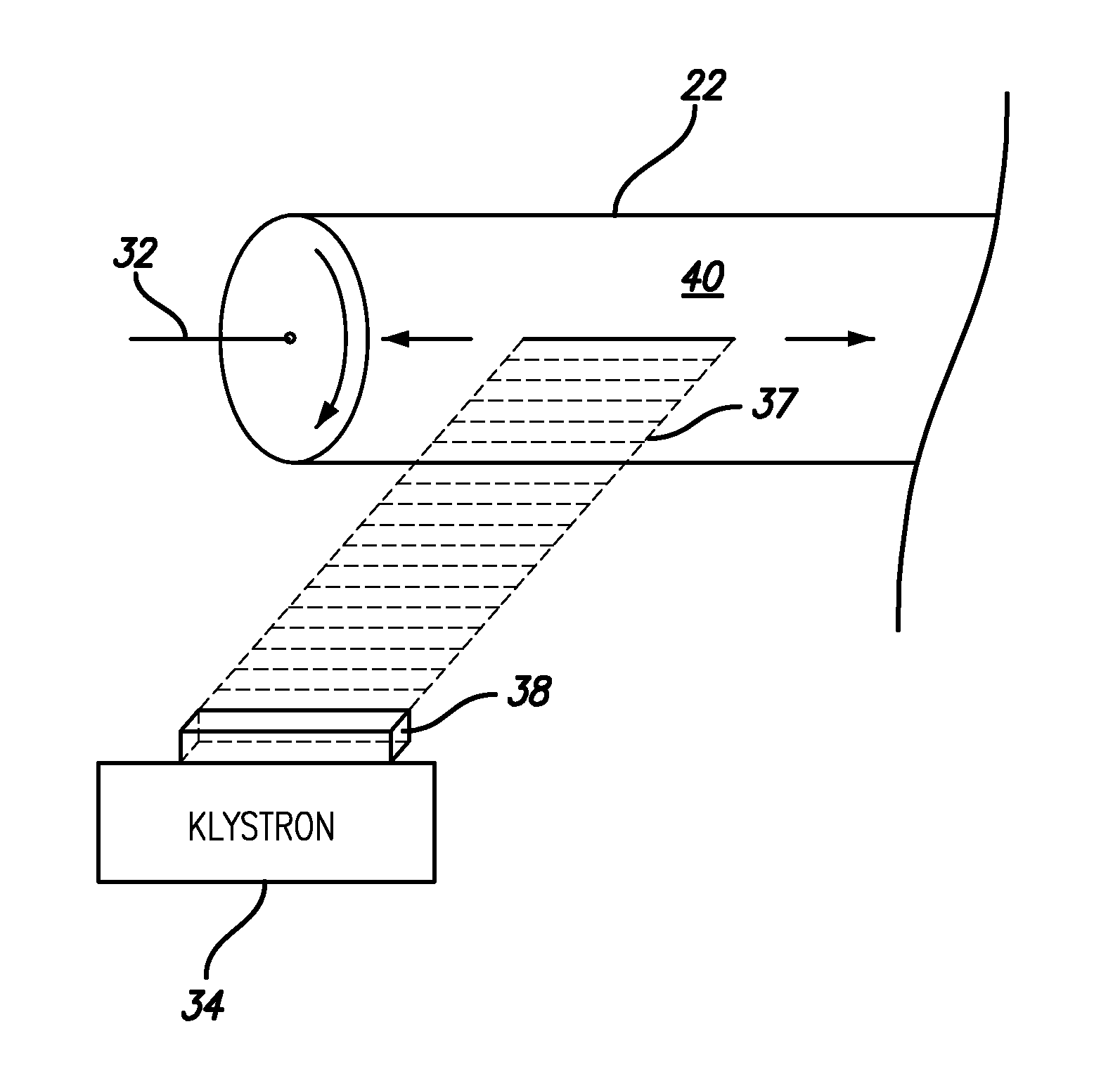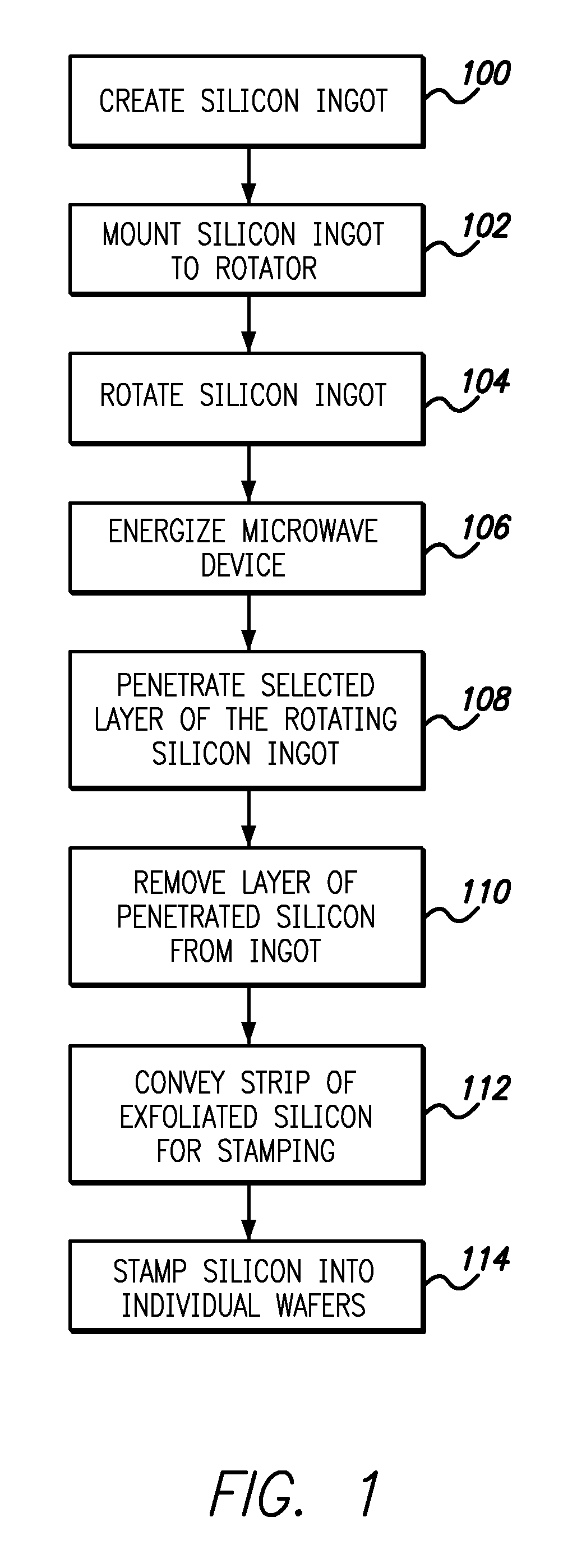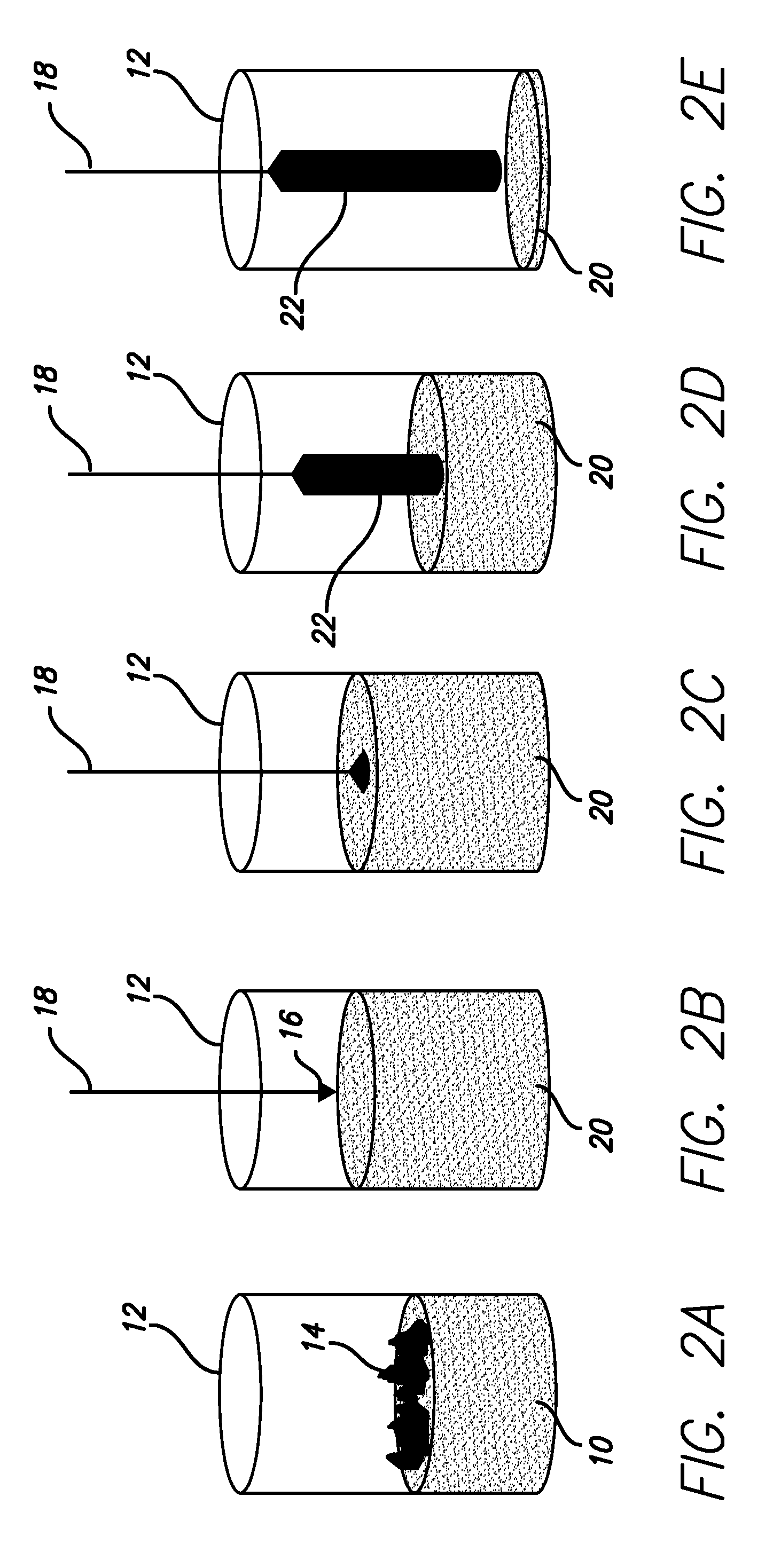Processes and apparatuses for manufacturing wafers
a manufacturing apparatus and wafer technology, applied in the direction of manufacturing tools, crystal growth process, after-treatment details, etc., can solve the problems of requiring repair of surface damage to the wafer, requiring relatively large chunks of valuable and expensive wafer material, and two-step conventional process is costly and time-consuming, so as to maximize the q value and efficiently exfoliate the outer surface
- Summary
- Abstract
- Description
- Claims
- Application Information
AI Technical Summary
Benefits of technology
Problems solved by technology
Method used
Image
Examples
Embodiment Construction
[0031]As shown in the drawings for purposes of illustration, the present invention for the improved processes for manufacturing wafers is shown generally with respect to the flowchart in FIG. 1 and the operation of the manufacturing process is shown in more detail in FIGS. 2-10. More specifically, the first step, as shown in FIG. 1, is to create an ingot 100. In a preferred embodiment, the ingot 100 is a monocyrstalline cylindrical silicon ingot. Although, the ingot 100 may be any material suitable for exfoliation, including polycrystalline silicon, and may have any cross-sectional shape, such as polygonal cross-sectional shape. The processes and apparatuses disclosed herein aim to, inter alia, reduce the waste associated with squaring off a cylindrical ingot used as a workpiece for creating square or rectangular silicon wafers for use with solar panels and the like. Furthermore, the processes and apparatuses disclosed herein are able to further reduce wasted wafer material by at le...
PUM
| Property | Measurement | Unit |
|---|---|---|
| width | aaaaa | aaaaa |
| thickness | aaaaa | aaaaa |
| diameter | aaaaa | aaaaa |
Abstract
Description
Claims
Application Information
 Login to View More
Login to View More - R&D
- Intellectual Property
- Life Sciences
- Materials
- Tech Scout
- Unparalleled Data Quality
- Higher Quality Content
- 60% Fewer Hallucinations
Browse by: Latest US Patents, China's latest patents, Technical Efficacy Thesaurus, Application Domain, Technology Topic, Popular Technical Reports.
© 2025 PatSnap. All rights reserved.Legal|Privacy policy|Modern Slavery Act Transparency Statement|Sitemap|About US| Contact US: help@patsnap.com



